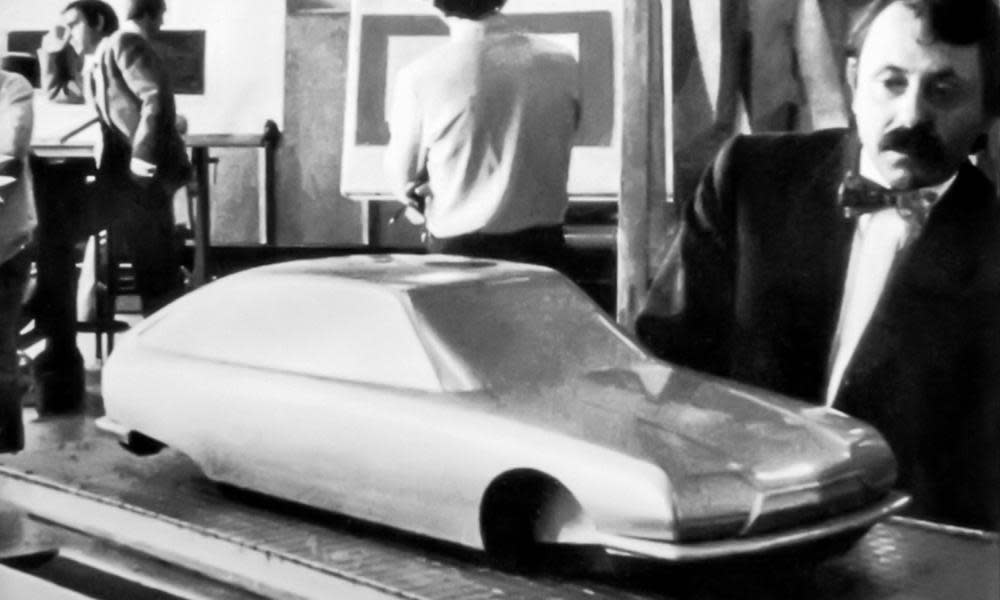Robert Opron obituary

From the 1930s to the 1970s, Citroën cars featured distinctive designs that always seemed typically French, usually quirky, often innovative, sometimes ugly, but at their best very elegant. One of their creators was Robert Opron, who has died aged 89 from Covid-19 complications.
Opron was Citroën’s chief designer from 1964 to 1974. During that time he and his team were responsible for three landmark cars: the SM coupé and the GS small family car, both introduced in 1970, and the larger CX saloon of 1974. All three demonstrated a preoccupation with good aerodynamics. The GS and the CX were, respectively, chosen as the European Car of the Year in 1971 and 1975.
When the Italian design journal Style Auto featured the SM, they printed a densely technical 20-page treatise discussing the aerodynamics. The SM was fitted with a V6 engine courtesy of Maserati, which Citroën had taken over in 1968. It was France’s only luxury GT car since the demise of the Facel Vega, and was the world’s fastest front-wheel-drive car, with a top speed of 140mph. Two special parade cars were made for the French president Georges Pompidou. Other heads of state who favoured the model included Leonid Brezhnev and Idi Amin.
By contrast, the GS was a modest family saloon, although it incorporated Citroën features such as the hydro-pneumatic suspension, front-wheel drive, and the famous single-spoke steering wheel. The engine was just 1015cc; Opron later said: “We really worked on it in the wind tunnel, because we knew we were saddled with a small engine.” It is still debated whether or not the shape was inspired by the 1967 Pininfarina Berlina Aerodinamica Austin 1800, something Opron denied. The GS was hailed as the most advanced saloon car in the world, selling nearly 2.5m vehicles before production ceased in 1986.
The third Opron-designed Citroën, the CX, was launched in 1974 as a replacement for the ageing DS/ID range. Styling followed the GS, with the vertical cutoff tail and the part-covered rear wheels, but the larger car had more generous proportions, including a longer bonnet and front overhang. It featured an unusual concave rear window that claimed to be self-cleaning. The CX designation was the French abbreviation for drag coefficient. It remained in production until 1991, with more than 1m being made.
Opron was born in Amiens in northern France, the son of Yvonne (nee Beaudenaille), a secretary, and Henri Opron, an army officer. His father was stationed in French colonies in Africa, where Opron spent most of his childhood. After returning to France, Opron enrolled at the École Nationale Supérieure des Beaux-Arts in Paris. He intended to become an industrial designer but studied varied subjects, including painting, sculpture, architecture and engineering. An early job was with the aircraft maker Nord, but in 1958 he joined the carmaker Simca.
Here he was given the job of creating a concept for a car of the future, which became the Fulgur, in the best Buck Rogers spaceship tradition, with a glass bubble roof and tailfins, supposedly powered by a nuclear reactor but, more interestingly, with electric motors and a computer for self-driving. He redesigned a Simca Vedette as a parade car for President Charles de Gaulle.
After a reorganisation of Simca, in 1960 Opron was made redundant. He then spent two years with a company designing kitchen appliances before getting a job at Citroën in 1962. Their chief designer, Flaminio Bertoni, famed as the genius behind the DS, died in 1964, and Opron took over, leading to his most productive period.
Unfortunately, Citroën’s finances deteriorated, and in 1974 the company was forced into a government-encouraged merger with Peugeot. Opron was rightly concerned about the independence of Citroën design and decided to leave. Remarkably, he was able to join the rival Renault company in a similar position, and spent the next decade there. The best of his Renault designs was the elegant 25 of 1983, but he was also responsible for the bland Renault 9 and 11 range and the banana-shaped Fuego coupe, neither of which has stood the test of time.
In 1985 he was on the move again, this time to head up an advanced design studio for Fiat in Italy. The best-known of his projects here was the Alfa Romeo SZ of 1989, a controversial “postmodern” design nicknamed “the monster”. He retired from Fiat in 1992 and moved to a house he and his wife had designed, at Antony on the outskirts of Paris. Until 2001, he was a design consultant for the microcar manufacturer Ligier. He took a keen interest in the preservation of cars he had designed, and was a frequent and welcome guest at events for classic Citroëns.
Small of stature, the dapper-looking Opron sported a moustache and usually a bow tie. His interests included music, from jazz to Bach, aircraft and flying. He kept a customised convertible based on the Citroën 2CV. In 2004 he was appointed a chevalier of the Légion d’honneur.
In 1953, he married Geneviève Mercier, who survives him, as do their two children, six grandchildren, and five great-grandchildren.
• Robert Maurice Jean Opron, car designer, born 22 February 1932; died 29 March 2021

 Yahoo Movies
Yahoo Movies 
